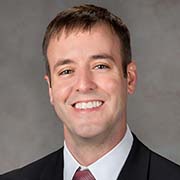
When Buying Equipment or Other Assets, Take Advantage of New Section 179 Deduction and Bonus Depreciation

Purchasing a new piece of equipment is a difficult, but necessary, decision for any business owner. With the cost of equipment starting at a few thousand dollars and climbing to upwards of $1 million, the decision requires a significant amount of consideration. Fortunately, the newly reformed tax laws that begin in 2018 can help a great deal with making these decisions. More specifically, the changes to bonus depreciation and the Section 179 deduction may work to your benefit.
Section 179 limits increased
Beginning in 2018, the limit on the amount that can be deducted for Section 179 has been increased to $1,000,000 with a spending cap of $2,500,000. This means that up to $1,000,000 of new and used equipment purchased and placed in service for use on the farm or business can all be deducted as an expense in the current year, as long as the total dollar amount of equipment purchased does not exceed $2,500,000. Once the spending cap is exceeded, the deduction received is reduced dollar for dollar. For example, if your total cost of equipment purchased during the year is $3,000,000, the deduction you would receive would be $500,000. These limits on Section 179 have increased significantly from an allowable deduction of $510,000 with a spending cap of $2,030,000 in 2017.
Bonus depreciation has increased too
As for bonus depreciation in 2018, 100 percent of the cost of new and used equipment acquired and placed in service can be deducted in the current year as opposed to 50 percent in 2017 on new equipment only. The increase was a pleasant surprise to taxpayers as, before tax reform, the 2018 deduction was expected to be only 40 percent.
Which method is best for your tax situation?
Just as in the past, with increased thresholds, farmers and other businesses have two ways to take an immediate write-off for part or all of the cost of newly acquired equipment. So, you may be asking, “Why take Section 179 when I can expense everything 100 percent with bonus depreciation?”
To answer, more specific rules and planning aspects must be considered. In some asset classes, a deduction can be allowed for one and not the other. Also, the Section 179 deduction can be elected on an individual asset-by-asset basis, whereas bonus depreciation is applied on an asset class basis. This means, to utilize bonus depreciation, you must elect all or none for a certain asset “life” class. For example, all assets with a 5-year life or all assets with a 20-year life would have to be treated the same, as a group. With Section 179, on the other hand, you can pick and choose the assets for which you would like to utilize the deduction.
The utilization of one deduction over the other can be a great tax planning technique. Although excess Section 179 amounts can be carried over from one year to the next, the Section 179 deduction cannot create a net operating loss in any given year, while bonus depreciation can. If you do elect bonus depreciation and a net operating loss is created, you have the opportunity to carry the loss back to previous years where income was shown to potentially receive a tax refund. The availability of the Section 179 deduction to be used on specifically selected assets allows businesses to control their taxable income so that it arrives at a target amount. This can be useful to possibly show enough profit to contribute to a retirement plan without having to pay too much in taxes, or even to maximize the new 20 percent pass-through deduction (also new for 2018).
Although this information relates mainly to construction, manufacturing and farm equipment purchased, other newly acquired assets may also qualify for Section 179 and/or bonus depreciation. It is important when considering acquiring equipment and other assets that you consult your Yeo & Yeo tax professional for timely, effective tax planning.
